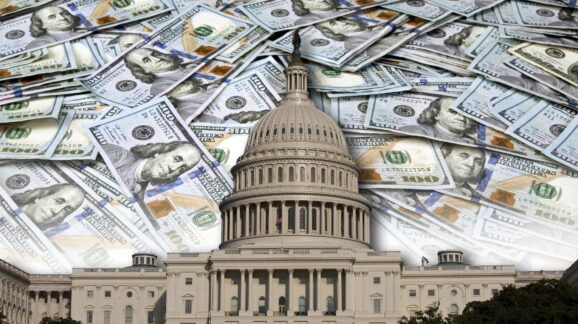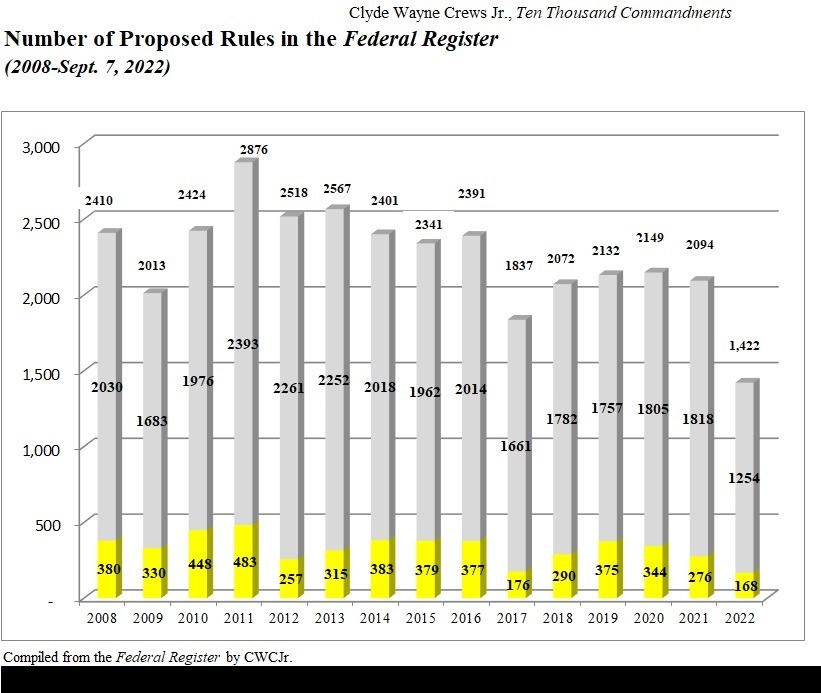Pondering the Paradox of the Paltry Proliferation of Prominent Proposed Rules in the Federal Register

Photo Credit: Getty
Spending is up, the debt is up, and Republicans keep helping raise the debt ceiling. Armageddon does not result, we have learned.
On the regulatory side of the ledger, Federal Register pages are heading back up to pre-Trump levels. Final rules and regulations issued are back over the 3,000 annually mark, like they were before Trump shaved off a little, but have not returned to Obama and Bush near-4,000 levels.
Biden’s overall rule counts are not high historically (yet), but there are nonetheless numerous ways in which he has turned the federal bureaucracy loose. A hint of that may be found in significant rules issued having apparently returned to the Obama-era levels of 2014, but not yet blowing far past them. Granted, acknowledging significance is already suspect, as major interventions may not have the tag affixed to them.
The real warning is the rulemaking expansion implied in the torrent of mega-legislation that has been enacted in recent years, beginning with the CARES Act at the outset of the pandemic and culminating most recently in the Inflation Reduction Act.
One might expect a rule-writing surge to result by now. Yet proposed rules in 2022 appear to be lagging, in the sense that neither the total nor the significant subset has not attained pre-Trump heights of Obama and Bush.
As of today, September 7, 2022, the 250th day of the year, there are 1422 proposed rules for the year, with 168 of those deemed “significant. That’s seen in the chart here:

If things continue at the same pace, we’re looking at roughly 2,076 proposed rules for the year and 245 significant ones. As the chart shows, those are not record-breaking levels, even though one might expect proposed rules to function as a leading indicator of things to come. It will be tempting to some to proclaim that, “Biden isn’t such a big regulator after all,” but his “whole-of-government” initiatives put the notion of restraint to rest.
If honesty in government prevails, we should full expect proposed rules to catch up to earlier years pre-pandemic, pre “rescue” heights. If honesty doesn’t prevail, the ballooning of the federal government need no longer materialize in the addition of rules, but by means of “regulatory dark matter” instead.
Even spending alone constitutes regulatory intervention, especially with the federal government’s huge procurement heft.
When government lords over enough of our lives, there comes a point where it stops being recognized as regulation at all. That is the case with so-called budget and transfer rules administering government programs. In no roundup of regulation does one find Social Security and Medicare, as those have sufficiently displaced the private sector to attain the status of invisible trees in their nationalized, regulatory forests.
As government and public-private partnerships grow, there is no need for Congress to pass a law; there’s no need for an agency to write notice and comment rules. All they need to do in the executive branch is issue one of myriad forms of sub-regulatory guidance document or directive.
That’s one reason why inventories of guidance documents were so important, and why we’re trying to keep a spotlight on whatever reluctant tallies agencies maintain.
Biden always says “we’re at an inflection point.” With agencies’ “whole-of-government” setting the tone, the actual inflection point at which we sit is that of whether or not there is going to be democratic accountability.